[ad_1]
I have to warn you, peace lilies really are as easy to grow as they say.
The only problem with this is that one day, your plant is as happy as a clam in its little container, but before you know it it’s pushing at the edges, ready to break out.
When that happens – and it will eventually happen – it’s repotting time. At this point, you have two options:
You can give your peace lily a bigger home, or you can divide it and make two smaller plants.
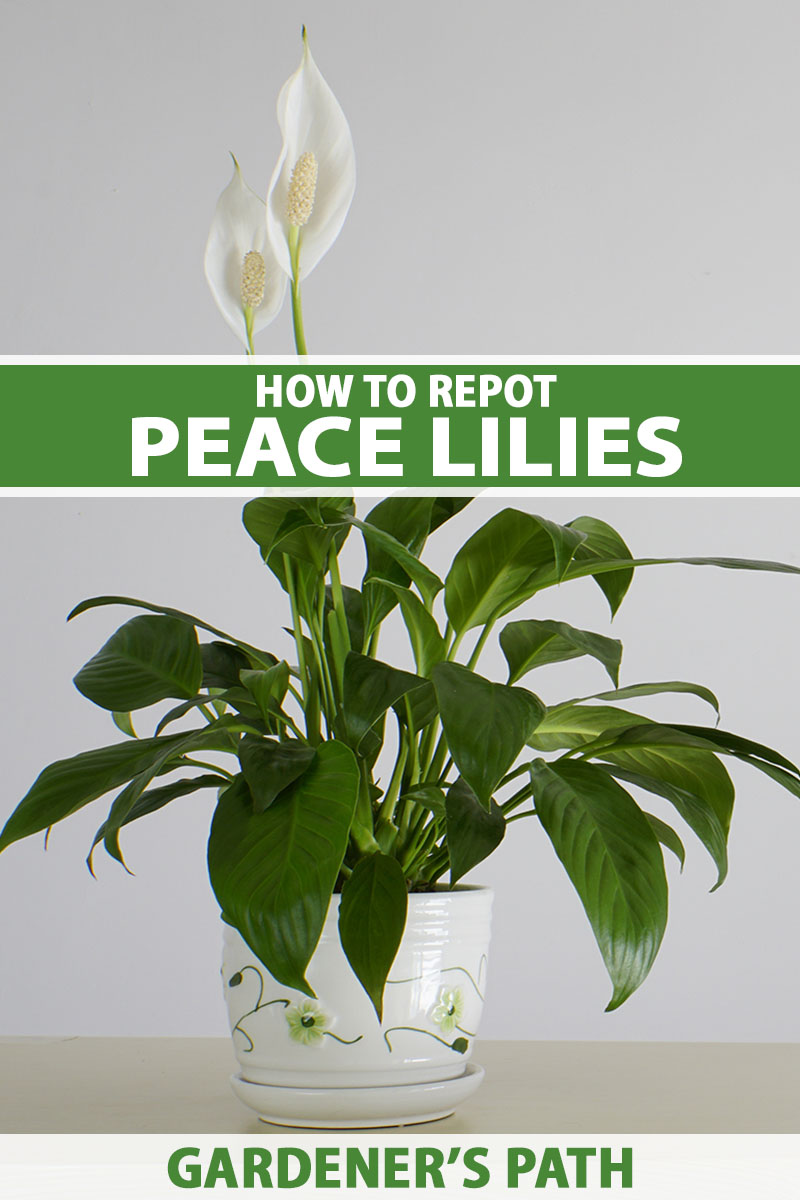
We link to vendors to help you find relevant products. If you buy from one of our links, we may earn a commission.
To help you figure out the process and decide which method is best for you, here’s what we will discuss:
Put on some gloves, pull out the containers, and let’s dig in.
A Quick Introduction to Peace Lilies
Peace lilies are incredibly popular as houseplants, for good reason.
They reliably produce attractive flower-like spathes, unlike the majority of other houseplants which are mainly grown for their foliage, and they’re pretty easy to raise – so long as you don’t use chlorinated water.
Not true lilies, these plants are in the Spathiphyllum genus and are related to monstera, philodendron, and pothos.
They grow natively in tropical areas of Mexico and other parts of the southern end of North America, as well as parts of South America and Southeast Asia.
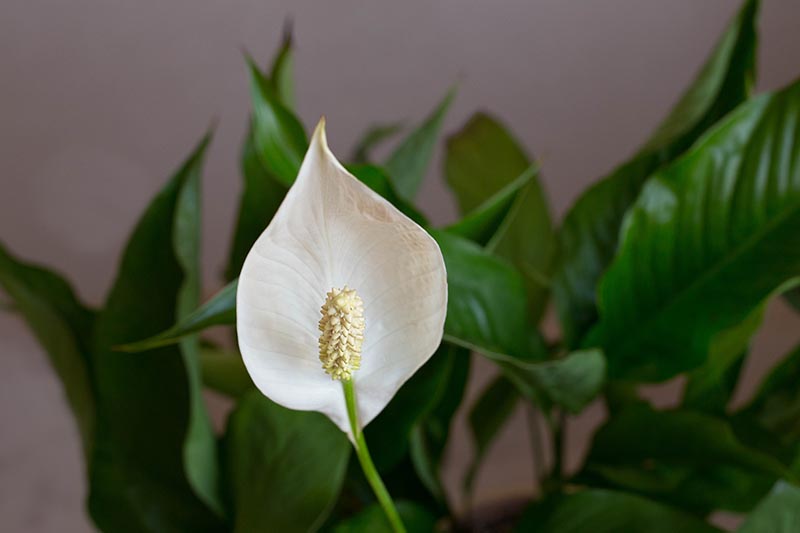
You can easily recognize these beauties by their striking white “flowers,” which are not actually blossoms at all – but rather, a modified leaf called a spathe that surrounds a flower-covered spike called a spadix.
There are two ways to repot a peace lily. The first is to simply move it to a slightly larger pot, and the second is to divide the plant.
If you choose the latter method, you can keep half of the plant in the original pot and place the other half in a second pot, or you can compost the division or give it away if you don’t need more plants in your life. If that’s the case, give me a call!
It’s always best to prepare your tools prior to starting the job of repotting a plant. This makes the task go more quickly, which helps to reduce the chance of transplant shock.
You will need a second pot if you’re dividing your plant, and enough fresh, clean potting soil to fill the container or containers you’re using. Choose a potting medium that is advertised as water retentive, since Spathiphyllum species are big fans of moisture.

If you can’t find water-retentive potting soil, any potting medium will do. Just add a handful of perlite or rice hulls to each gallon of medium. I prefer to use rice hulls because they’re better for the environment, and they create room for air as well as water retention in the soil.
If you’re reusing a pot, make sure to wipe it out with a cloth that has been moistened with water and dish soap. You can use a mixture of one part bleach to 10 parts water to sanitize reused containers, to help prevent the spread of disease.
You might need a butter knife or other type of straight knife, to loosen the plant from its existing pot. Grab a clean pair of scissors as well, if you want to divide the plant.
You might also need a clean trowel to help move the medium into place, so keep one on hand.
When to Repot
You can repot your plant at any time of the year, and you shouldn’t feel like you need to rush. Assuming the situation isn’t urgent, spring is the best time to do the job. Your plant should quickly rebound at that time of year and start growing strong.
The peace lily is one of those plants that doesn’t mind being rootbound. But there are a few things to watch for that are sure signs your buddy needs more room.
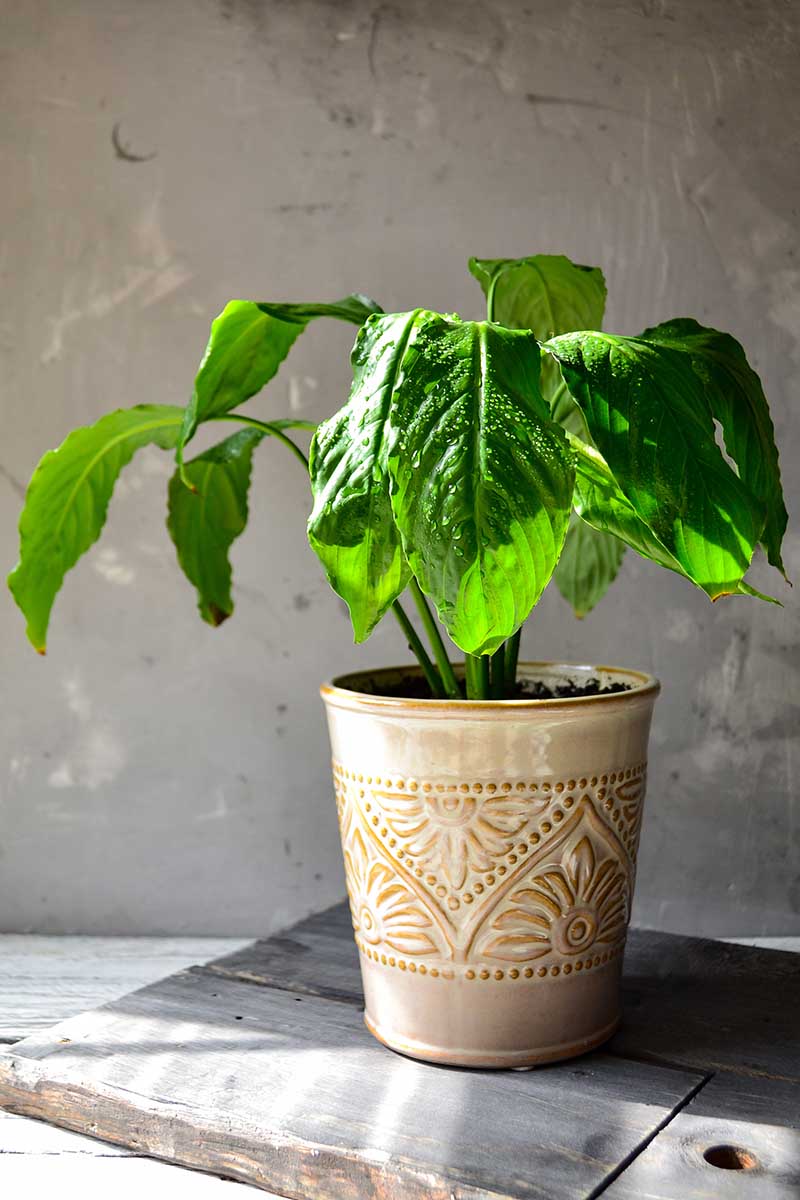
If you see roots protruding out of the drainage holes or poking up out of the surface of the soil, it’s time. If the soil drains extremely quickly and it seems like you can’t keep the potting medium adequately moist, that’s another sure sign.
Some potential issues may make repotting a more urgent need.
You can also repot if the soil has accumulated a buildup of too much fertilizer, or if the medium has become hydrophobic or compacted, which is common as soil ages and the organic matter that it contains breaks down.
Too much fertilizer often causes the leaves to turn brown or yellow, so watch for those signs.
Steps to Repot Peace Lilies
The first step to swap the existing container for a new one or to divide and repot an existing specimen is to water your Spathiphyllum the day before you intend to begin. This reduces stress and makes the soil easier to work with.
The following day, remove the plant from its pot.
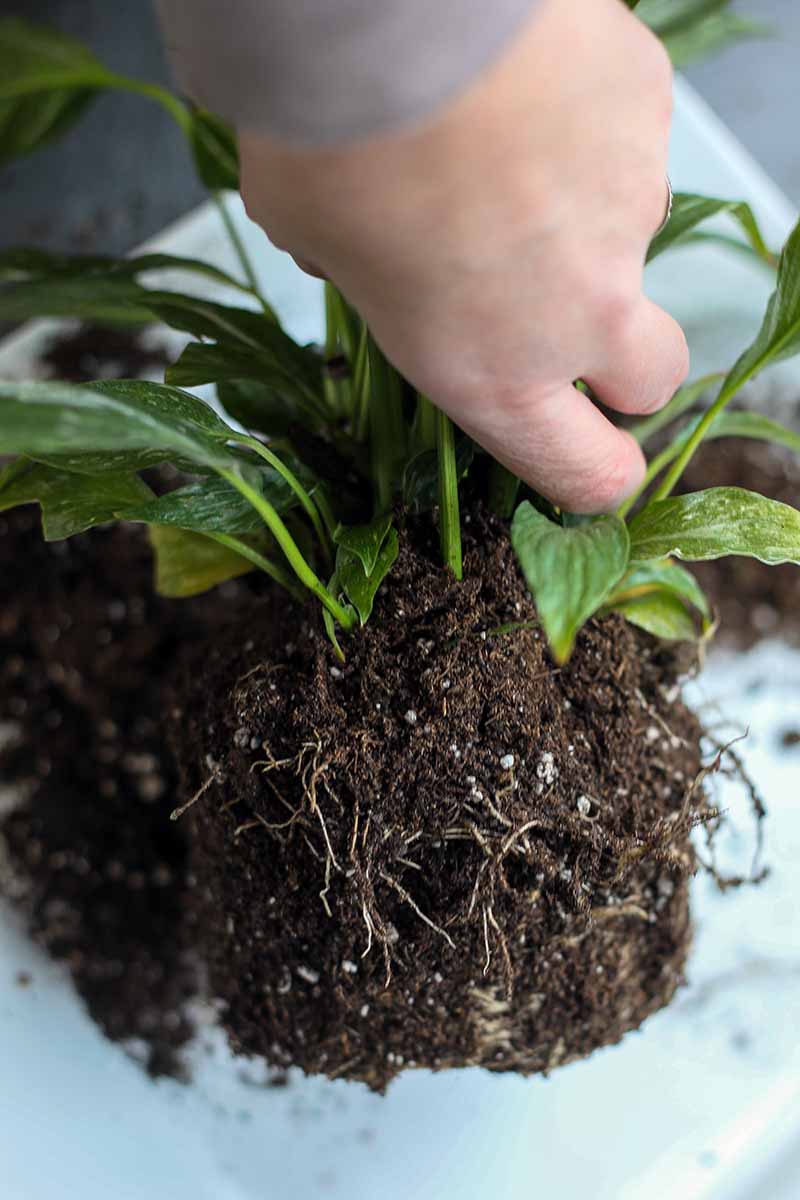
For a seriously rootbound plant, this can be a challenge. Turn the peace lily on its side and grasp it gently around the base, putting your hand around as much of the stem as you can.
This poses a challenge because you want to grip it well enough to work it out of its container, but you don’t want to break any stems or leaves. Just do your best.
Gently wiggle the roots out of the container. If it’s rootbound, take a butter knife or other straight knife and run it around the inner perimeter of the pot.
Knock away as much of the soil medium as you can from the root ball and gently loosen up the roots.
Dividing
If you plan to divide a mature specimen to give it a little more room, now’s the time. Gently tease apart the roots and crown so you have two or more clumps of about the same size.
Peace lilies tend to produce stems in clusters, so look for a natural place to split the plant apart. You might need to take a pair of scissors and cut apart the roots if they’re extremely tangled.
Now you can place each section in a container with about an inch of wiggle room around the perimeter of the root ball.
Repotting
To transplant without dividing, choose a container that’s one size up from the previous one.
You don’t want to pick something that’s too much larger because this makes it difficult to give the roots the water they crave without causing the newly abundant quantity of soil to become waterlogged.
Err on the side of selecting something that’s a touch too small rather than being too large, because Spathiphyllum doesn’t mind being rootbound.

Place enough soil in the base of the container to allow the crown to sit at the same level it was before. Fill in around the roots with soil.
Water to help settle the substrate. If the soil compacts as you water, add more. The soil should ultimately sit about an inch below the rim of the pot.
There’s no need to fertilize for at least a month or maybe two after repotting.
Give Your Pretty Peace Lily a New Home
A rootbound peace lily actually shows that you’ve done an excellent job as a houseplant parent. Your little green friend is so happy that it can’t contain itself. And when that happens, it’s time to give it a bigger, better home with fresh soil.
Now, you know how!
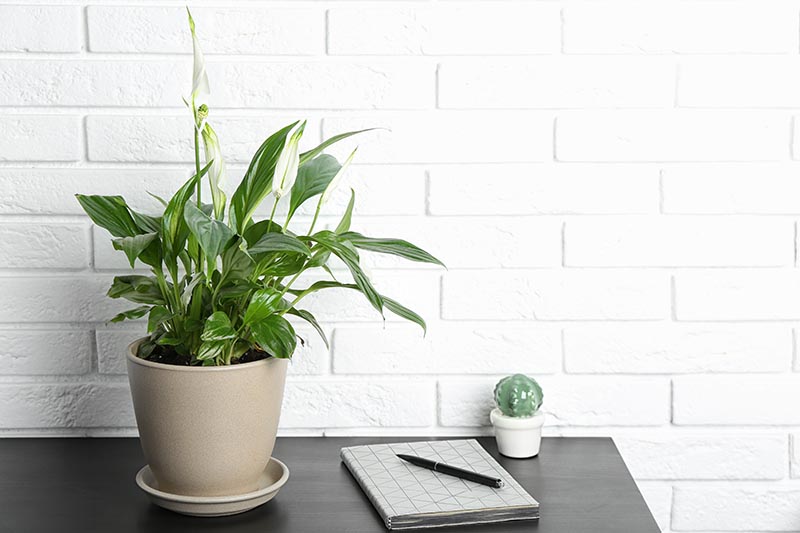
What cultivar or species of Spathiphyllum are you growing? How often do you usually find that you need to repot? Let us know in the comments!
If you want to expand your peace lily knowledge even more, you might be interested in one of our other guides to growing this houseplant, starting with these:
[ad_2]
Source link








 + Planting String of Watermelon Succulents
+ Planting String of Watermelon Succulents  with Garden Answer
with Garden Answer


